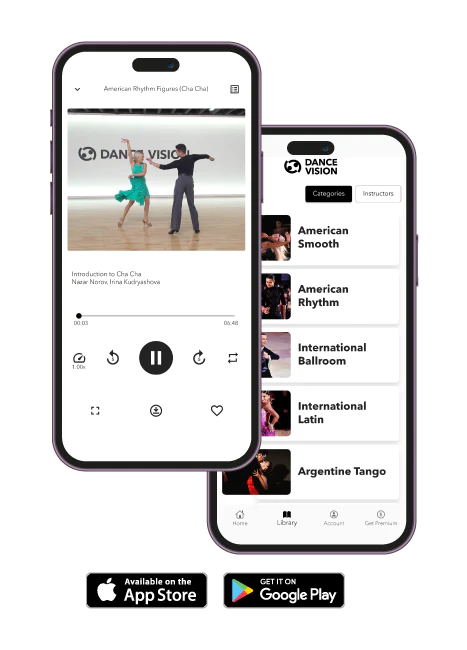Do you enjoy dynamic dances or dancing freely to express yourself? Perhaps jazz dance is perfect for you. Originating from African American communities, jazz dance is a vibrant and expressive form of dance. Dive into this blog to discover more about jazz dance.
Origins
Originally, jazz dance encompassed any type of dance movements accompanied by jazz music. It originated in New Orleans. It is said that the Cakewalk and the Pattin' Juba dances were performed by enslaved African people on plantations, laying the foundation for the Jazz dance we know today. Jazz dance gained popularity during the early 20th century, notably during the Harlem Renaissance in the 1920s, and further spread through Broadway, film, and television.
Rhythmic Language
In jazz dance, the body embodies rhythmic expression, converting jazz music's pulse and syncopation into dynamic movement. Each step, sway, and gesture forms part of a lively conversation between dancer and rhythm. From sharp footwork to fluid lines, jazz dance conveys the nuances of jazz music through its distinctive vocabulary. It's an art of spontaneity and improvisation, where dancers engage with the beat, crafting motions that echo the soulful melodies and vibrant rhythms of jazz.
Styles and Subgenres
1. Traditional Jazz
Traditional Jazz is a lively, rhythmic dance style rooted in African American culture, featuring syncopated rhythms, improvisation, and energetic movements. It celebrates African American dance traditions, incorporating swing, blues, and ragtime music, often performed solo or in groups with dancers showcasing individual flair while maintaining community connection.
2. Broadway Jazz
Broadway Jazz is a dynamic, theatrical dance style blending traditional jazz technique with storytelling, character development, and dramatic choreography. It features intricate footwork, expressive gestures, and dynamic staging, embodying characters and narratives from musical theater through movement.
3. Contemporary Jazz
Contemporary Jazz blends traditional jazz technique with modern influences, emphasizing fluidity, musicality, and emotional expression. It incorporates elements of ballet, modern dance, and other styles, allowing for a dynamic choreographic vocabulary. Dancers focus on storytelling, personal interpretation, and connection to the music, pushing boundaries while embracing foundational techniques.
4. Lyrical Jazz
Lyrical Jazz combines ballet's fluidity with jazz's expressiveness, focusing on storytelling, musical interpretation, and emotional connection. Dancers convey narrative and mood through flowing movements and dynamic transitions, often to lyrical music. This style emphasizes conveying lyrics or themes, creating a captivating performance. It differs from contemporary jazz in its emphasis on soft, flowing movements and emotional storytelling to lyrical music.
5. Street Jazz
Street Jazz blends jazz technique with street dance influences, such as hip-hop and funk, creating a high-energy and expressive style. It features sharp isolations, intricate footwork, and powerful gestures, reflecting urban culture's raw energy. Dancers showcase individuality while honoring street dance roots.
6. Commercial Jazz
Commercial Jazz influenced by popular culture, blends jazz technique with hip-hop, pop, and other commercial styles for dynamic performances. Featuring flashy choreography and stylized movements, it reflects mainstream media's high-energy appeal. Dancers prioritize precision, athleticism, and charisma, delivering captivating performances suitable for music videos, commercials, and live entertainment.
7. Latin Jazz
merges jazz technique with Latin music and dance influences, like salsa, samba, and mambo, creating a dynamic fusion of movement and music. Featuring intricate footwork, sensual hip movements, and expressive partnering, it reflects the passion of Latin American culture. Dancers embrace the infectious rhythms, delivering lively performances celebrating the rich diversity of Latin dance traditions.
Jazz Legends
Certainly, behind jazz dance stand influential figures. The following are just a few of the many legends who have made significant contributions to the art form.
1. Jack Cole
Jack Cole was born on April 27, 1911, in New Brunswick, New Jersey. He was known as the "Father of Theatrical Jazz Dance." Renowned for formalizing African-American jazz dance styles, his innovative choreography fused elements from diverse cultural traditions. He showcased his influential work in Broadway and Hollywood productions.
2. Bob Fosse
Bob Fosse, born on June 23, 1927, in Chicago, Illinois, is renowned for his iconic jazz hands and black hats. He made history as the sole individual to win an Oscar, Emmy, and Tony award in a year (1973). Fosse's distinctive choreography, marked by sultry movements and precise isolations, has had a profound and lasting impact on jazz dance.
3. Katherine Dunham
Katherine Dunham was born on June 22, 1909, in Glen Ellyn, Illinois, USA. She revolutionized jazz dance by blending African American, Caribbean, and other cultural movement styles into her ballets. Her influential Dunham Technique gave rise to "Dunham Jazz," identifying her as one of the great pillars in American dance history.
4. Matt Mattox
Matt Mattox was born on August 16, 1921, in Tulsa, Oklahoma, and was one of the world's most influential teachers of jazz dance. Renowned for his technique, which he termed "freestyle dancing," Mattox blended ballet with the isolations of choreographer Jack Cole, incorporating intricate arm movements and tap-influenced footwork for added complexity.
5. Luigi (Eugene Louis Faccuito)
Eugene Louis Faccuito, commonly known as Luigi, was born on March 20, 1925, in Steubenville, Ohio, United States. He is renowned for his classic jazz dance style, characterized as elegant, sophisticated, and akin to "liquid fire." Regarded as an Ambassador of Jazz and an Innovator, Luigi's contributions to the art form have earned him titles such as "A Pioneer," "The Teacher's Teacher," and "A Body Doctor," reflecting his profound impact on jazz dance education and technique.
Jazz in Popular Culture
Jazz saturates popular culture, its lively rhythms and heartfelt tunes threading through music, film, literature, and more. From the dim jazz clubs of Harlem to the glimmering stages of Hollywood, jazz entrances audiences with its spontaneous energy and deep emotions. It pulses through bustling city streets, sets the tone for late-night drives, and fuels the creativity of artists worldwide. Jazz remains a timeless source of fascination, shaping the landscape of popular culture.
Jazz Today
Today, jazz dance thrives as a dynamic art form enjoyed by enthusiasts of all ages. From professional companies to local studios, its popularity endures. Contemporary choreography integrates diverse influences, blending traditional techniques with elements of hip-hop and modern styles. Performances, ranging from intimate showcases to grand productions, exhibit the creativity and passion of dancers worldwide. Jazz dance today epitomizes a vibrant fusion of tradition and innovation, captivating audiences and inspiring dancers to explore new horizons in movement expression.
And that concludes our journey through the vibrant world of jazz dance. To continue discovering more insights and inspiration from dance, learn to dance with us! Keep dancing, keep exploring, and let the music of jazz continue to move you!

